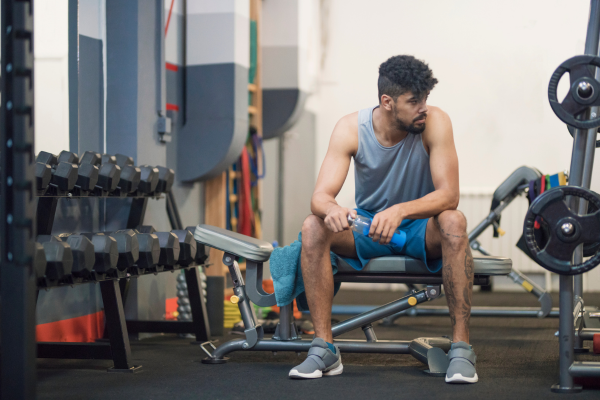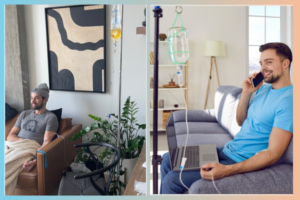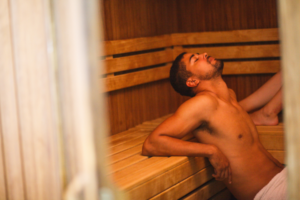
Athletes Recovery Methods: An In-depth Guide
October 4, 2024
Recovery is one of the important components in an athlete’s training program that usually gets ignored but is very significant for long-term success. Poor recovery opens up an athlete to muscle fatigue, deterioration in performance, and increasing the chances of injury. In the last few years, awareness has been growing around athletes’ recovery methods, with coaches and athletes alike realizing the need for optimal recovery if peak performance is to be achieved or realized.
This guide will help discover the different recovery methods of athletes and how each technique can promote one’s physical and mental health. From hydration to massage therapy, every single method of recovery is important in making sure the athlete is prepared for any event or performance.
Importance of Recovery Methods for Athletes

It is a fact that proper recovery techniques are used to make an athlete’s body strong after the strenuous workout his/her body goes through. During workouts, muscle fibers tear up, and the recovery process heals these torn-up fibers so they grow back stronger. Using good athletes recovery techniques does the trick to fasten this process.
Role of Recovery in Muscle Repair and Growth
After hard exercise, the muscles you have used need some time to recover and rebuild. The right modes of recovery, like nutrition, hydration, and rest, offer the building blocks the body needs to put itself together. Besides, the inclusion of proper athletes’ recovery methods minimizes muscle soreness, enabling athletes to come back even stronger for subsequent training.
How Proper Recovery Improves Performance
The extra time taken by athletes to recover not only reduces the risk of injury but also very importantly improves performance. Recovery replenishes energy stores, rebalances hydration levels, and repairs muscle tissue so that athletes can train harder and compete better. It leads to burnout, fatigue, and worse performances, which is why focusing on athletes’ recovery methods is so important.
Common Recovery Methods Mistakes Athletes Make
Many athletes look down on recovery.
Common mistakes are:
- Overtraining: wherein one skips rest days or pushes too hard without time for recovery.
- The other is nutrition wherein one fails to refuel properly with carbohydrates, proteins, and fluids after workouts, which makes their recovery process slower.
- Sleep: The sleep factor is one of the most important methods for athlete recovery, yet athletes do not rest enough to allow the full recuperation of their bodies.
Without these mistakes and the introduction of good recovery strategies, the athlete then can take full guarantee that his body will have been given the best opportunity to grow, repair, and be at its best.
1. Active Recovery Methods for Athletes
Definition and Benefits of Active Recovery
Active recovery refers to the low-intensity exercises done while resting. This keeps the athlete in motion and does not put their muscles under great stress. Unlike complete rest, active recovery can keep the blood flowing to deliver oxygen and nutrients to the muscles. This process hastens healing. Active recovery is one of the most efficient methods of recovery for athletes, as it reduces muscle soreness, improves flexibility, and avoids stiffness following hard workouts.
Examples of Active Recovery
Adding active recovery to an athlete’s routine does not have to be strenuous in nature. Common active recovery methods include:
- Light Jogging: This would be a slow and easy-paced run that keeps the body moving without pulling the muscles.
- Swimming: Its low-impact nature allows for full-body movement, improving blood flow and flexibility.
- Yoga: Gentle yoga stretches and relaxes the muscles, releasing tightness while allowing the mind to also rest.
- Stretching Exercises: Simple dynamic and static stretches maintain flexibility and prevent injury.
This way, the recovery methods of the athletes ensure that the muscles get enough nutrition and oxygen to recover without getting ‘overworked’.
Methods of Incorporating Active Recovery into an Athlete’s Training Program
Active recovery should be part of any athlete’s routine training program. This can be incorporated after days of hard work-outs as well as within an athlete’s cool-down routine. For example:
- Cool-downs after workout: After the end of a training session, 10-15 minutes should be done either lightly jogging or stretching, thus easing transition to recovery.
- Recovery days: Active recovery sessions shall be held between days of heavy workouts. This keeps the body moving without further straining it.
- Pre-game warm-ups: Some light stretches or yoga before competition to ready the muscles for activity.
Recovery methods for athletes help balance training intensity with good recovery and improve performance over a long period.
2. Passive Recovery Techniques
Introduction to Passive Recovery
Passive recovery is completely about rest and allowing the body to recover completely without any activity whatsoever. Where active recovery promotes movement, passive recovery helps when the body needs time to recover after hard work or injury. Such techniques of recovery for the athletes are very helpful when the athletes are suffering from fatigue, overtraining, or injury and have to allow their bodies to generate completely.
Examples of Passive Recovery
The most common passive recoveries include:
- Sleep: Probably the most vital method of recovery, sleep is when tissue repair occurs, energies are replenished, and memory is consolidated. Good sleep is crucial for effective sporting performance and clear thinking.
- Rest Days: Totally taking a day off from training means muscles aren’t being put under any extra stress but rather are being given time to bounce back.
- Meditation: Such mental relaxation techniques as meditation may accelerate recovery through stress reduction and the effective focusing of the mind.
Importance of Quality Sleep for Muscle Regeneration and Mental Focus
Sleep is another crucial form of passive recovery. The human body secretes growth hormones during deep sleep, which helps in the repair and building of muscles. Besides, sleep enables the restoration of energy and focusing of the mind, which are very vital in guaranteeing high performance. Sleep is one recovery method that, if disregarded with an athlete, will lead to a lack of endurance, slower reaction times, and a greater risk of injury. Sleep is an athlete recovery method that focuses on the recharging of both the mind and body.
3. Nutrition-Based Recovery Methods
The Role of Nutrition in Speeding Up Recovery
Nutrition is a cornerstone when it comes to recovery. What athletes consume after working out can make quite a huge difference in the way they recover and their muscle rebuilding process. Proper nutrition replenishes energy stores, repairs muscle tissue, and restores lost electrolytes. In focusing on nutrient-dense meals, athletes are in a position to really accelerate recovery times and avoid unnecessary fatigues.
Key Nutrients for Athlete Recovery
Of course, some nutrients are essential in techniques of recovery for athletes. These are as follows:
- Protein: This nutrient is vital for the repair and building of muscles. During exercise, the muscles are damaged, and proteins help in building back these fibers.
- Carbohydrates: During intense periods of training, the stores of carbohydrate become depleted. Returning these stores energizes and their replenishment boosts the endurance for the succeeding workouts.
- Healthy Fats: Out of these, Omega -3 fatty acids reduce the inflammation and help muscle recovery.
These nutrients should, therefore, be made available in post-workout meals to ensure the athlete gets fuel for adequate recovery.
Hydration and Electrolyte Balance:
When athletes exercise, they lose water and essential electrolytes through their sweat. If these fluids and necessary nutrients are not replaced, the body can dehydrate and cramping may take place. Proper hydration aids one’s system in regulating body temperature, moving nutrients, and removing waste products. Electrolytes-sodium, potassium, and magnesium-are significant in maintaining fluid balance and supporting the nerve function; both are critical in effecting recovery methods for the athlete.
Regarding this, nutrient-rich food and water make sure the recovering tools are available to the athletes so that they regain their peak in less time.
4. IV Therapy for Athlete Recovery Methods

Hydration and the Importance of Proper Rehydration in Recovery among Athletes
Hydration forms the backbone of any great recovery strategy for athletes, as fluids are important in facilitating fluid balance, participating in the repair of muscles, and generally helping the body with its functions. On these matters, through evaporation, athletes lose fluids and electrolytes once they undergo a strenuous workout; when not replaced, this can result in dehydration, a condition accompanied by muscle cramping, general fatigue, and a decline in performance. Proper hydration provides body temperature regulation, flushing of toxins, and transportation of very important nutrients to the muscles-all very foundational elements in any given recovery routine.
Introduction to Fast-Acting Hydration:
While traditional hydration methods such as water and electrolyte drinks are important, mobile IV therapy offers an immediate solution, directly targeting the recovery needs of the athlete. Mobile IV therapy involves the administration of fluids, electrolytes, and vitamins, such as B12 and B-Complex, directly into the bloodstream, bypassing the digestive tract for quicker absorption. This makes sure that one gets rapid rehydration and that those important building blocks, like magnesium and zinc that are lost in extreme exercise, are restored. These minerals are highly required by muscles for functioning, reduction of inflammation, and overall recovery.
Mobile IV Therapy: How It Benefits Athletes and What Uplift IV & Wellness Offers
Recently, mobile IV therapy has emerged as one of the most effective ways for an athlete to recover because it’s convenient and effective. With the services of mobile IV therapy, one gets treated at home or in the gym while saving much precious time and, therefore, getting the full potential of recovery. As a result, with mobile IV therapy, athletes recover much faster due to increased hydration, muscle repair, and decreased fatigue. At Uplift IV & Wellness, customized IV drips are designed to be tailored according to your needs. Their services range from things like the Uplifted Athlete and Uplifted Meyers, aimed at assisting the body in recovering from athletic activities by providing the essential vitamins and minerals.
5. Cold Therapy Cryotherapy & Ice Baths: The Science of Cold Therapy in Reducing Muscle Inflammation

Cold therapy is one of the most common recovery techniques among athletes. This technique works through the reduction of inflammation and soreness of muscles after any intense exercise. Exposure to cold causes blood vessels to constrict, helping to reduce swelling and flush out metabolic products that accumulate in muscles during exercise. Once the cold stimulus is removed, blood flow returns to the area with oxygen and nutrients required for muscle repair. It’s called vasoconstriction and vasodilation. This process has proved highly beneficial to minimize post-workout soreness and for quick recovery.
Benefits of Cryotherapy, Ice Baths, and Cold Shower
- Cryotherapy: This is a very modern form of cold therapy where the human body is exposed to extremely cold temperatures for a short period. This has been proven effective in reducing inflammation and improving flow to facilitate quicker muscle recovery.
- Ice Baths: One of the easier and more traditional ways through which to conduct cold therapy, ice baths consist of submerging one’s body into cold water with the intent of reducing inflammation, muscle soreness, and even general fatigue. This is especially helpful after hard workouts or competitions.
- Cold showers: Less extreme than cryotherapy or an ice bath, cold showers also can bring major relief to muscle soreness and circulation benefits besides being accessible for daily use in recovery.
When and How Cold Therapy Is Used by Athletes for Maximum Efficiency
- Cold therapy works best right after hard work when your muscles are swollen and hurt. For maximum efficiency, an athlete should:
- Use cryotherapy as a quick recovery after hard workouts.
- Competitors utilizing methods of recovery, such as taking ice baths after competition or highly intensive workouts.
- Taking regular cold showers after a workout for recovery.
Each of these is highly modifiable for specific athlete needs and can greatly help them recover quicker while preventing injury in the process.
6. Heat Therapy Saunas & Hot Baths The Contribution of Heat Therapy in Muscle Relaxation and Recovery

Another major recovery technique in athletes involves heat therapy. It acts in three ways to relax the muscles; thus, promoting blood flow and relieving rigidity. If the body receives heat, then the blood vessels become dilated, the circulation improves, and oxygen and nutrients are transported to the repair muscles in more amount. These procedures reduce muscle tension, alleviate pain, and maintain flexibility-all reasons why the best employment of heat therapy works after an exercise, particularly to avoid injuries.
Benefits of Using Saunas, Hot Baths, and Heating Pads following Exercises
- Saunas: It is often believed that regular sauna treatment relaxes the individual and elevates his heart rate that aids in good blood circulation. This situation enables the muscles to recover more efficiently and even facilitates the removal of toxins out of the body, which reduces muscle cramps or strains.
- Hot Baths: The hot bath after exercising can relieve tension, lessen joint pains, and relax the person. Adding Epsom salts to the bath will enhance the recovery by replenishing the magnesium in the body and further easing aching muscles.
- Heat Packs: These are given to certain stiffened or aching groups of muscles for better relief and flexibility, especially where it is needed most.
7. How Massage Therapy Helps Recover Your Muscles and Improves Blood Flow
One of the best recovery options an athlete can have is massage therapy. Massage therapy can help to heal and relax muscle tension, decrease soreness, and regulate the flow of blood. By rubbing the muscles, massage encourages proper blood flow to the tissues so richly filled with oxygenated blood, thus hastening the recovery process. This increased circulation aids in the removal of metabolic waste in the muscles, reduces inflammation and soreness. Whether post-intensive training or just after a routine, massage treatment boosts performance and career longevity for an athlete. Techniques include deep tissue massage, sports massage, self-myofascial release, common use of foam rolling.
- Deep Tissue Massage: It focuses on deeper layers of muscles for relief against chronic pain and muscle tension. This is very effective in the after-care of injuries or even during long-term muscle tensions among athletes.
- Sports Massage: As the name itself denotes, it is targeted at athletes. It attends to those very muscles that are brought into play by specific sports. It can, in this regard, be utilized as either a pre-event resource to enhance flexibility or a post-event tool to reduce muscle soreness and enhance the rate of recovery.
- Self-myofascial release: this is the stimulation of oneself through massage, using a foam roller to apply pressure to constricted muscles with the intent of breaking down adhesions and facilitating better function. The great thing with foam rolling is that it releases the trigger points inside one’s muscles, helping anyone to be more mobile; thus, very effective in recovery for athletes.
8. Compression and Recovery
The Benefits of Compression Garments in the Improvement of Blood Flow and the Reduction of Muscle Soreness
These days, all those sleeves, socks, and leggings have become one more favorable way for athletes to recover in the case of improving blood flow and reducing general muscle soreness. Compression garments apply gentle pressure to the muscles, which helps raise blood circulation and deliver oxygen and nutrients to fatigued muscles. In turn, this aids in reducing the buildup of lactic acid believed to cause muscle soreness in the aftermath of rigorous workout sessions. Additionally, compression clothing minimizes swelling, which enables athletes to recover from exhaustive training or competition much faster. The following are some helpful ways of incorporating compression wear into daily recovery routines: Compression gear can be worn during and after workouts. Indeed, it constitutes a very vital aspect of an athlete’s recovery regimen. Here’s how:
- During Exercise: Compression clothing during workout provides better blood circulation and enables the trainee to work longer since it reduces muscle oscillation.
- After Workout: Put on some compression socks or sleeves after a killer session to enhance your recovery and improve blood flow to those fatigued muscles.
- Travel and Rest Days: The times when people can be most at rest, during travel or on rest days, are those times when compression garments are most useful to aid in recovery by reducing swelling. Consistent use of compressions is an easy, effective way of achieving overall recovery and supporting muscle health and, as such, is integral to modern methods of recovery for the athlete.
9. Mental Recovery Methods for Athletes
Importance of Mental Recovery: Meditation, Mindfulness, and Visualization Techniques
While most athletes primarily focus on physical recovery, mental recovery is equally important in ensuring peak performance. Mental fatigue has immense implications for focus, decision-making, and overall athletic performance. It is important to incorporate recovery methods that address the mind to maintain a balanced perspective and not experience burnout. Meditation, mindfulness, and visualization techniques offer a chance for recovery time in the minds of athletes to reduce stress and improve concentration.
- Meditation helps clear the minds of athletes, reduces their levels of stress, and enhances their levels of focus. The more an athlete mediates, the more clarity their minds will be, and hence they can make good decisions during competitions.
- Mindfulness: Mindfulness techniques help athletes to be present and hence deal with any form of stress and pressure facing them. Especially in high-pressure situations, mindfulness will help athletes to remain calm and composed.
- Visualization: This comprises mental rehearsal of events and competitions. It allows the athlete to build confidence and reduce anxiety, therefore improving performance.
By adopting all these forms of recovery as a mental athlete, they are guaranteed that when anything comes along their way, they would be prepared with body and mind
Ways of Discharging Mental Fatigue and Enhancing Concentration
Mental fatigue, too, may creep in with prolonged training or competition. To help deal with it, the following alternatives may be taken up by the sportsperson: Rest Scheduling: Pre-scheduled mental breaks are as necessary as their physical counterparts. After a certain time relaxing and letting your hair down, an athlete returns to his sport with refocusing. Breathing Exercises: A few breathing exercises lower the stress level and help concentration, hence quick and effective recovery mentally.
- Digital Detox: The reduced screen time, coupled with withdrawal from devices, may enable athletes to retrieve their mental energies in favor of better focus and mental toughness
Lacing these athlete recovery methods with physical recoveries will ensure that athletes are well-rounded in their approaches toward performance enhancement.
Recovery techniques that an athlete must adopt are varied in nature, as peak performance and long-lasting success depend on the integration of all of them. A comprehensive recovery plan, which involves physical techniques such as hydration, cold therapy, and massage, will be interwoven with the psychic recovery methods of meditation and mindfulness.
This keeps the athlete strong, composed, and focused. If recovery time is of the essence, check out Uplift IV & Wellness’s mobile IV therapy, crafted to restore vital nutrients and keep you performing at peak level. Schedule a consultation with Uplift IV Wellness today!